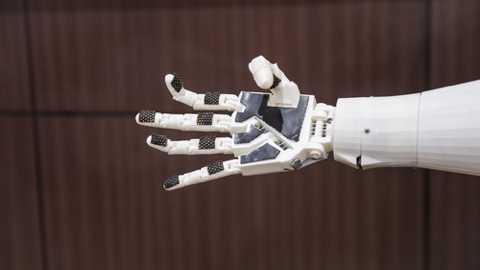
The U.S. Army Research Laboratory is collaborating with the University of Minnesota to explore the potential uses of soft robots – where machines are built not of steel, but of highly compliant plastics. Robots in current use are structurally rigid, making them impractical when performing military operations in highly congested and contested urban environments, where covert maneuvering is critical.
“Successful stealthy maneuvering requires high structural flexibility and distributive control to sneak into confined or restricted spaces, operate for extended periods and emulate biological morphologies and adaptability,” said Dr. Ed Habtour, ARL researcher who specializes in nonlinear structural dynamics.
The researchers, led by mechanical engineer Ghazaleh Haghiashtiani of the University of Minnesota, are seeking inspiration from invertebrates.
“In the initial phase of the project, our team began by investigating new methods for emulating the locomotion of invertebrates, which provided fundamental insights into the machineries of their soft distributed actuation circuitries that allow for high bending motions without skeletal support,” says researcher Michael McAlpine.
The preliminary work is made from a combination of a type of synthetic polymer called an elastomer and ionic hydrogel created entirely on a 3D printer — making the entire creation flexible.
“The intriguing interactions among the materials’ micromechanical properties and various non-linearities may provide new scientific opportunities to emulate the symbiotic interactions in biological systems,” Habtour said. “If we can understand these interactions, then we can use those insights to fabricate dynamic structures and flexible robots which are designed to be self-aware, self-sensing and capable of adjusting their morphologies and properties in real time to adapt to a myriad of external and internal conditions.”
The results were published in Extreme Mechanics Letters (EML) in a paper entitled: “3-D printed electrically-driven soft actuators“, 2018.
